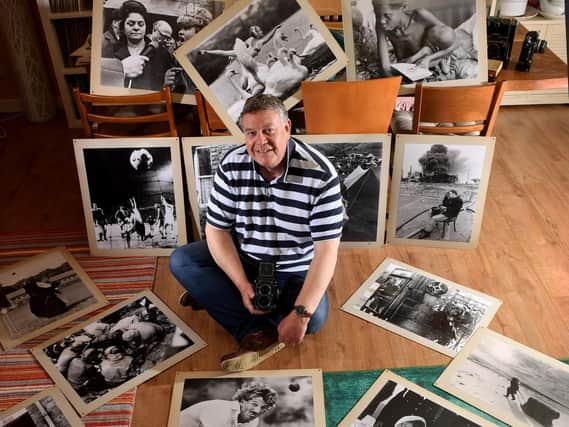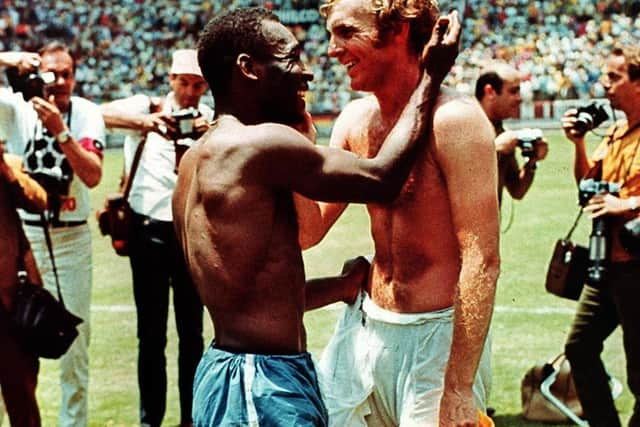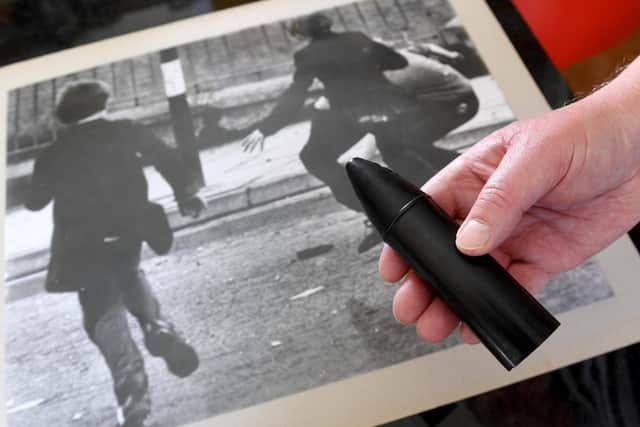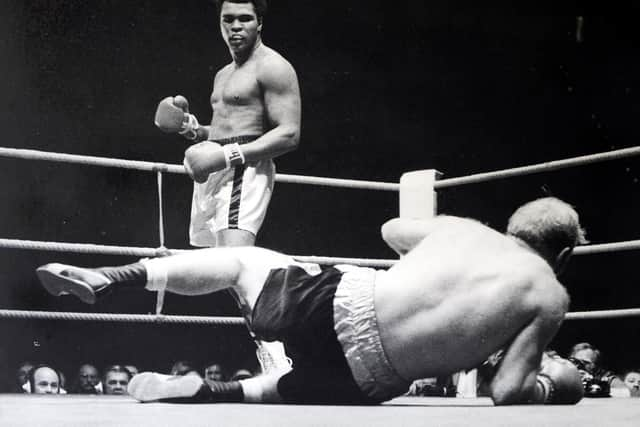From Pele and Muhammad Ali, to the Beatles and the Miners' Strike - John Varley's photos captured an era


During this time he had plenty of close shaves, but none closer than when his camera was smashed to pieces by a rubber bullet while he was working in Northern Ireland at the start of The Troubles.
His son, Andrew, picks up the story. “A group of kids raced after the bullet and picked it up and said ‘ten shillings’ and my dad said, ‘no, it hit me, that’s mine,’ and grabbed it off them.”
Advertisement
Hide AdAdvertisement
Hide AdHis father kept the rubber bullet as a reminder of his time in Northern Ireland. “When you hear on the news that police fired rubber bullets you probably don’t think too much of it, but when you see the size of them you realise they can really do some damage,” says Andrew. “Photographers would be rotated to go to Northern Ireland. My mother used to hate it because people would get threatened, but he’d go each time he was asked.”


As a Daily Mirror photographer from 1958 until his retirement in 1990, John Varley covered some of the country’s biggest news stories of the era, including the Yorkshire Ripper case and the 1984/5 Miners’ Strike. He photographed Royalty and prime ministers, and everyone from the Beatles and the Rolling Stones, to Madonna and Michael Jackson. On top of all that he covered five world cups and the 1976 Montreal Olympics, as well Leeds United in their pomp during the Don Revie era.
When he died 11 years ago he left behind an archive of superlative photographs that chronicle a period of history that is still within touching distance.
Andrew is cut from the same cloth (he is a respected freelance photographer himself) and looks after his father’s remarkable collection of photographic prints at his home, just outside Leeds.
Advertisement
Hide AdAdvertisement
Hide AdJohn was born in Doncaster in 1934 and became fascinated by photography when a neighbour took a snap of him and brought him the print the following day. From that moment on, he made up his mind that there was only one job for him. After leaving school in 1949 he worked as a dark room lad at the Yorkshire Evening News in Doncaster and had his first photograph published by the newspaper two years later.


Following his National Service, which was spent in Germany, he returned to Yorkshire working as a freelance photographer.
His big break came when he covered the dramatic floods that hit South Yorkshire in 1958. “There’s a photo of a policeman stripped off to the waist holding a baby above his head and he’s wading through flood water in South Yorkshire,” says Andrew. “That picture ended up on the front of most national newspapers and two of them – the Mirror and the Mail – offered him a job, and he chose the Mirror.”
For the next 32 years he had a ringside position at many of the biggest stories of the day, and if that wasn’t pressure enough when he started out he had an old VN press camera, which used a single slide. “You’d put one in your camera, wait for your moment and go ‘bang’. Then you’d have to take that out and put your next one in.”
Advertisement
Hide AdAdvertisement
Hide AdIt meant if you missed your shot there often wasn’t a second chance. Life was made considerably easier with the introduction of the German Rolleiflex square camera, which gave you 12 shots, but it’s a far cry from today’s lightning quick digital cameras.


John photographed countless famous names during his career. “He followed the Beatles all over the place when they came to Yorkshire. One day in Scarborough he got fed up doing the same old stuff so he waited at the back of the building. He thought they might come out that way because they always got mobbed at the front, and they did and he got a great picture of them all leaping over this car.
“He’d come back and do a load of prints and get them signed for his cousins who were younger than he was and he’d give the prints out never keeping any for himself.”
It seems he wasn’t impressed by the Fab Four. “He’d say, ‘it’ll never catch on.’”
Advertisement
Hide AdAdvertisement
Hide AdBiafra was John’s first major overseas assignment and covering the conflict was a sobering experience. “They waded through flood water and got on planes where the engine would pack in and they’d make emergency landings. They ate what was called ‘Nigerian rabbit’ and turned out to be a rat because people were starving.”
He was one of only two photographers that filmed the 1966 World Cup final in colour and was a regular fixture at Elland Road during the Revie era. “He had a good rapport with the players and Don Revie, they all knew him. Don was always good to the photographers. My dad said to him one time, ‘look, we’re shivering and getting wet through here and we’ve not been offered a cup of tea or anything.’ So Revie created a room for them and they were served tea and sandwiches through a service hatch.”
One of his biggest honours was winning the World Press Photo Portfolio Award for his coverage of Muhammad Ali’s bruising fight with Halifax-born Richard Dunn in Munich in 1976. And for John, there was a footnote to the story.
“When they left they couldn’t get a taxi but there was a coach coming down the road and my dad flagged it down. It turned out to be full of Ali’s entourage with him sitting at the side. My dad apologised and said ‘I’m really sorry, we need a lift back into town because we can’t get a taxi, would you mind dropping us off?’ And Muhammad Ali nodded and someone, probably Ali’s manager, said ‘can you make space for these two at the back of the bus?’ So they got a lift back to town courtesy of Muhammad Ali.”
Advertisement
Hide AdAdvertisement
Hide AdBrilliant as these photographs are, they aren’t his most famous. That accolade goes to his photo of Bobby Moore and Pele embracing in the heat of Guadalajara during the 1970 World Cup, following Brazil’s 1-0 victory over England.
“He was really lucky to get the shot because he was late to it,” says Andrew. “He was watching Bobby Moore but then he realised what was happening because he could see Pele coming towards Moore. So he ran like hell and got to the edge of the circle and he just happened to be in the right spot to get that shot, because if you’re slightly off the angle’s not as good. And if you watch the TV footage, that moment is over in a split second.”
It encapsulates the art, and timing, of great photography. “He knew that was the picture to have because Bobby Moore kept Pele out of the game that day. It is an iconic shot of two of the greatest ever players,” says Andrew. “To have it mentioned in the top ten most iconic football photographs ever, that doesn’t happen often, it’s not going to happen to me.”
Andrew has his own favourites. “There’s one of these women chatting in Northern Ireland and daily life going on as normal and you have two soldiers with guns at the end of the street. It speaks volumes about what was going on there at the time. Another one is of Billy Bremner and Jackie Charlton in bed after the FA Cup final. Bremner’s having a cigarette and it’s just a great shot.”
Advertisement
Hide AdAdvertisement
Hide AdThe best of John’s work bears comparison with such luminaries as Sir Don McCullin, Ian Berry and Martin Parr, and Andrew would like to hold an exhibition if sponsors stepped forward.
"He was a Yorkshire lad who did his bit for press photography and it’s a surviving archive of an era that’s long gone. I know there are many out there but I like to think this is one of the best.”